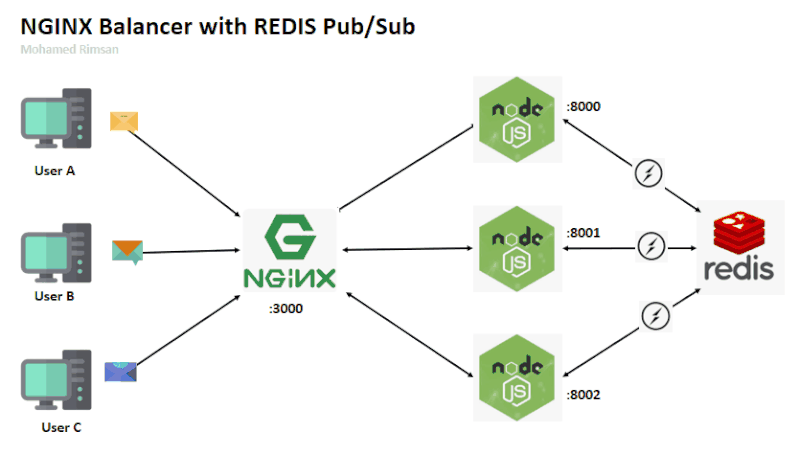
What?
Using NGINX as a load balancer in conjunction with Redis Pub/Sub can be a powerful combination for building scalable and resilient architectures.
NGINX can distribute incoming requests across multiple application servers, and Redis Pub/Sub can be used for communication between components or services.
NGINX as Load Balancer:
Purpose: Distributes incoming WebSocket connections among multiple Node.js instances.
Configuration: Configures NGINX to listen for WebSocket connections and forwards them to the Node.js servers.
Node.js with Socket.IO:
Purpose: Handles WebSocket connections and facilitates real-time communication between clients and servers.
Redis Pub/Sub:
Purpose: Facilitates communication between Node.js instances by acting as a message broker.
Workflow:
Client connects to NGINX: Clients establish WebSocket connections to NGINX, which acts as a reverse proxy.
NGINX forwards the connection to Node.js: NGINX forwards the WebSocket connection to one of the Node.js instances in the upstream group.
Node.js handles real-time communication: Node.js handles WebSocket events using Socket.IO, enabling real-time communication between clients and the server.
Node.js instances communicate via Redis: Node.js instances communicate with each other using Redis Pub/Sub for broadcasting messages or coordinating actions.
Scaling: As traffic increases, additional Node.js instances can be added, and NGINX will automatically distribute connections among them.